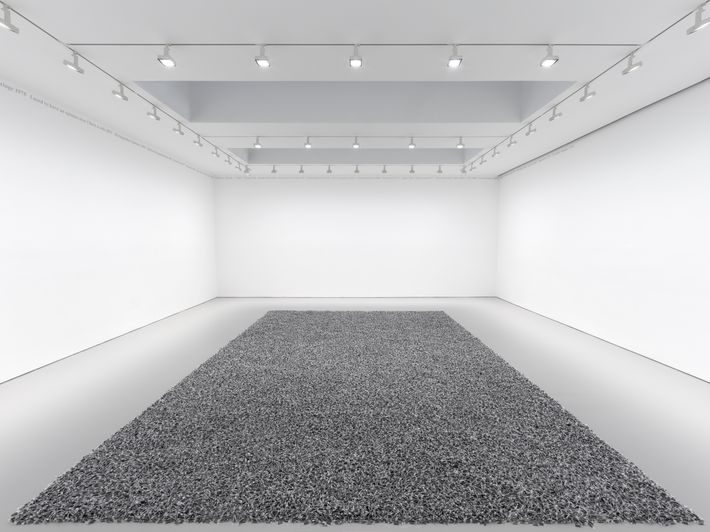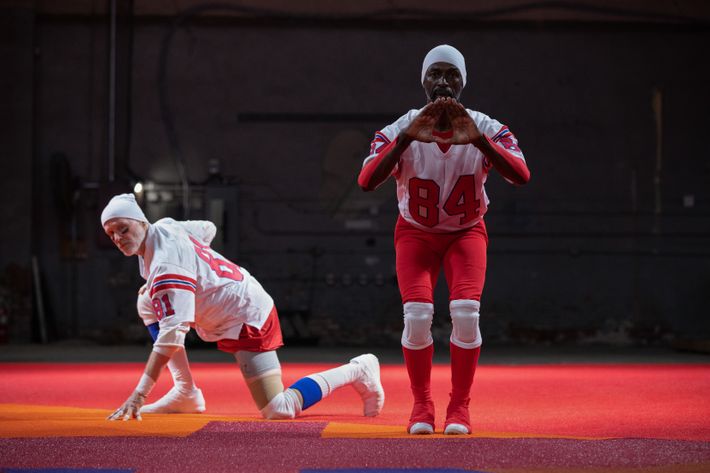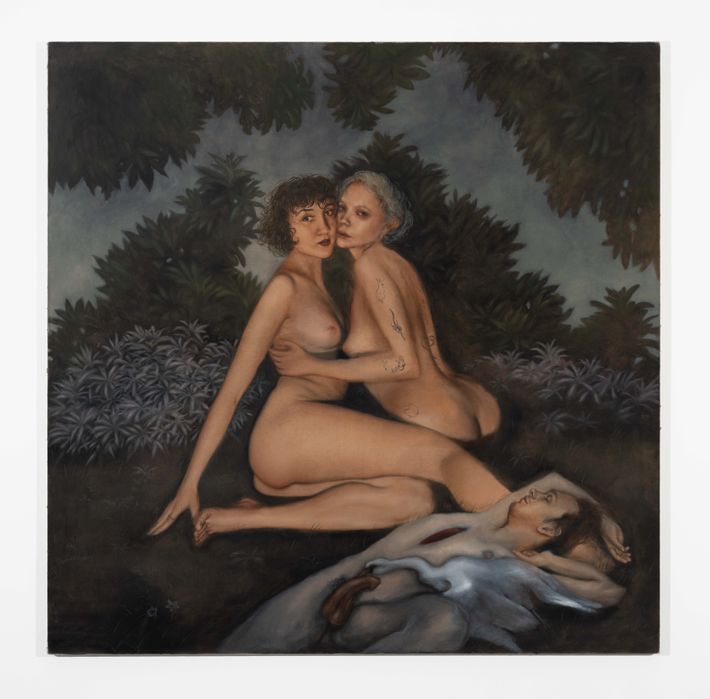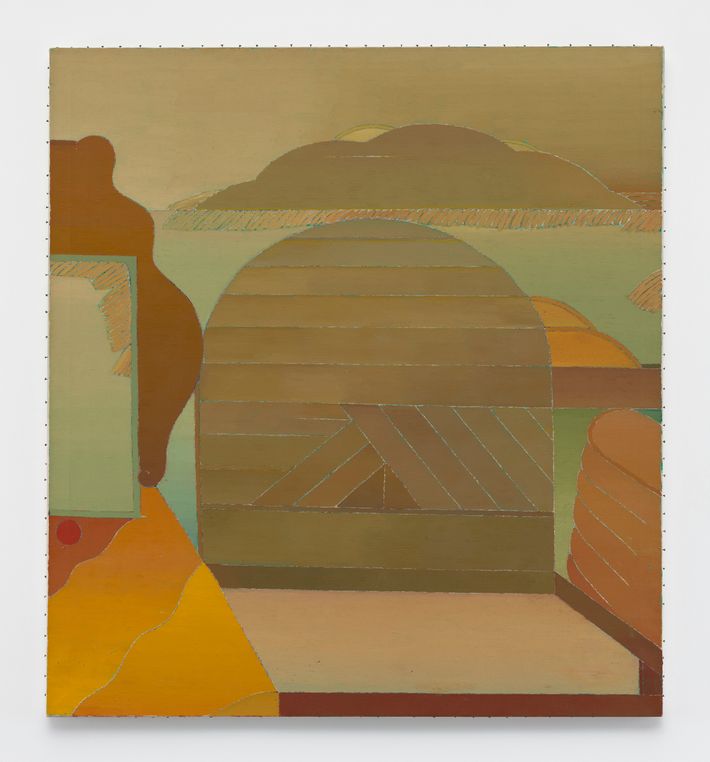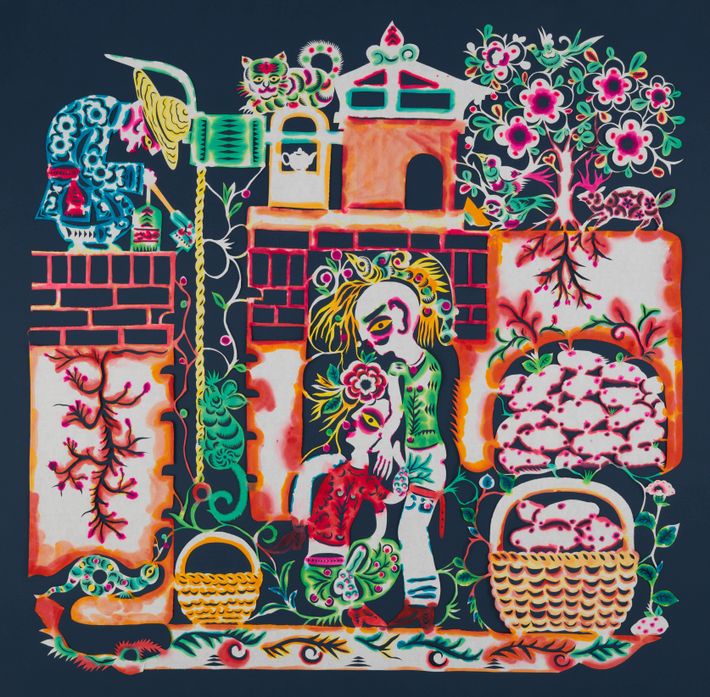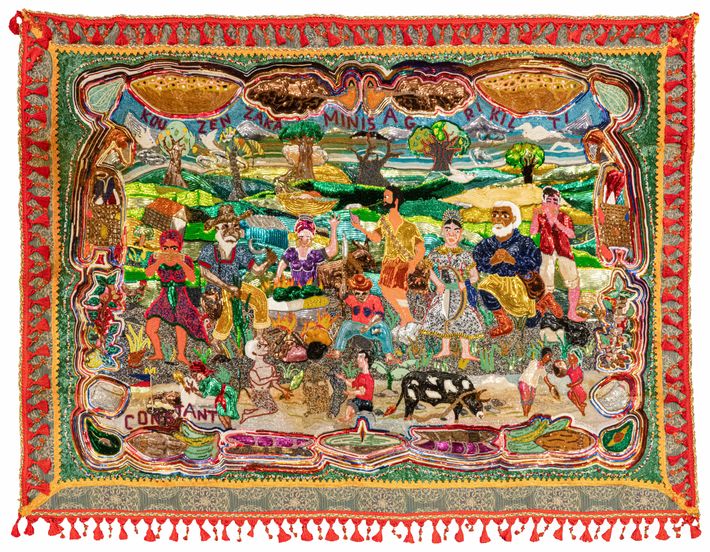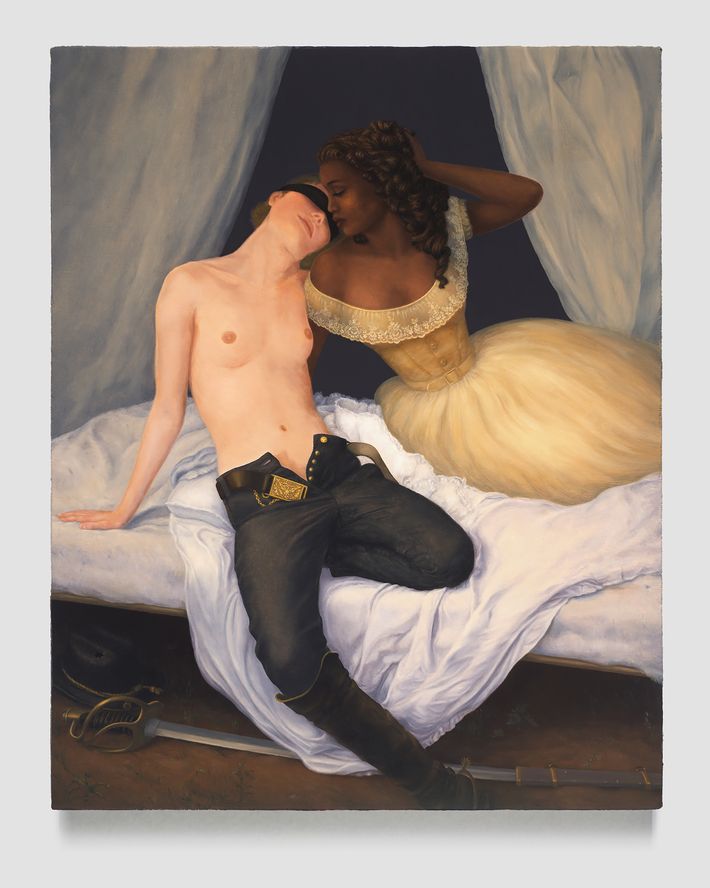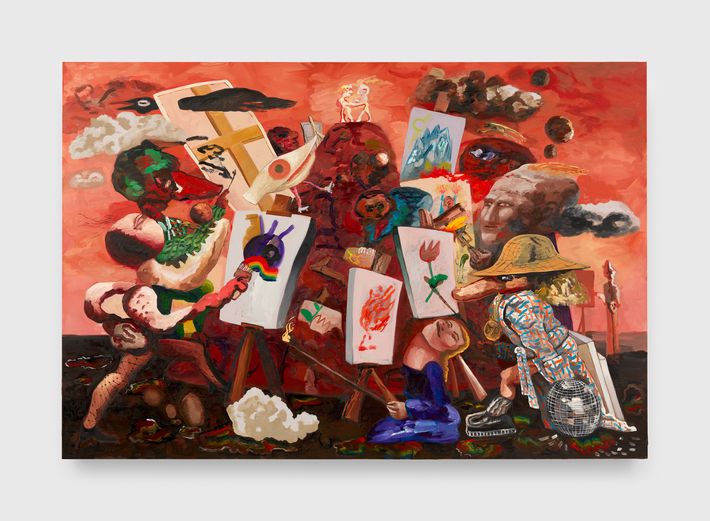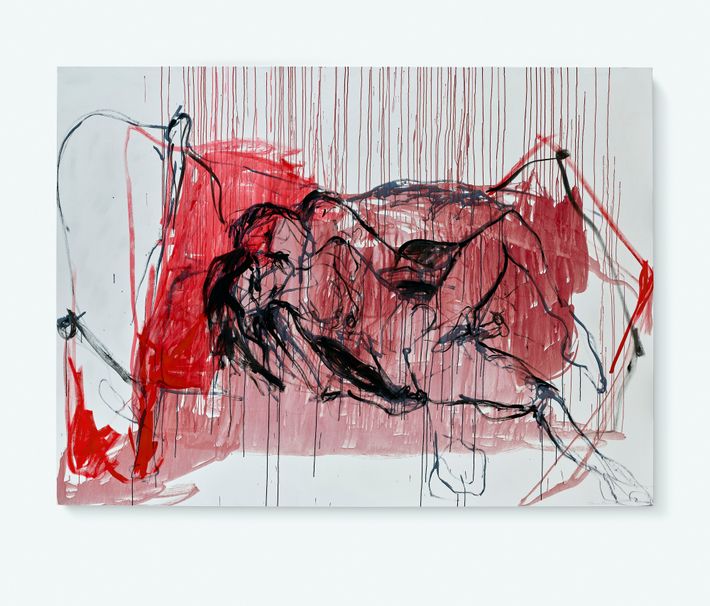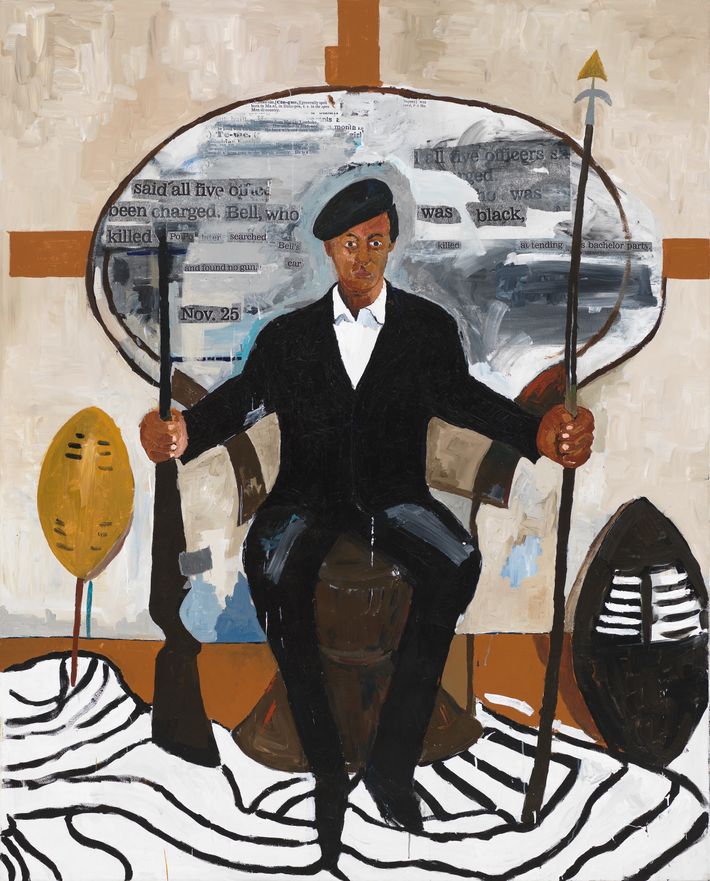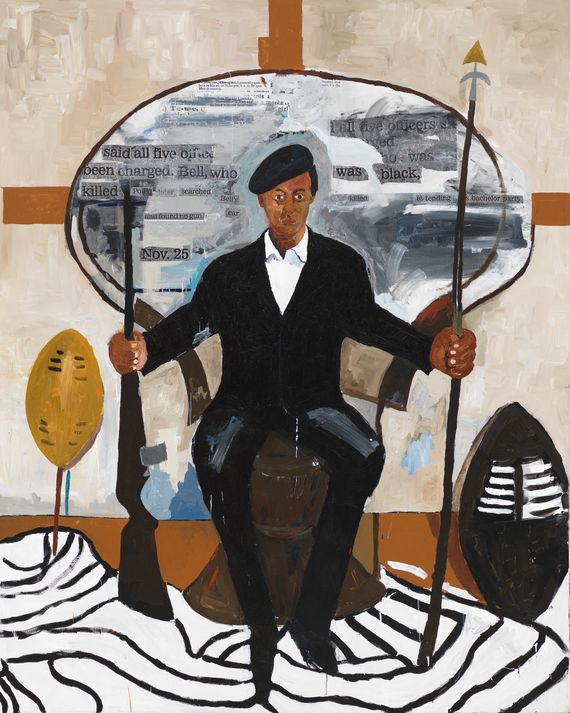
Art is always supposedly in the midst of some crisis of aesthetics; the critics say we’re just rehashing the past. Leave it to artists themselves — new, old, and at the margins — to prove them wrong. There were so many great shows this past year in New York that it was hard to choose just ten.
Most of the fast action was in galleries large and small. At David Zwirner, the belly of the Chelsea mega-gallery beast, Dana Schutz took on all of art history and her own demons. Tracey Emin gave us pain, love, and universal suffering at the new gallery White Cube on the Upper East Side, while the young Agata Slowak, a Pole, created surreal paintings filled with desire in the teeny-weeny Fortnight Institute in the Bowery. Museums flexed, too: Witness the Whitney’s monumental Henry Taylor show, full of wildly rendered images of life and race in America.
10.
Felix Gonzalez-Torres, David Zwirner
On the last day of this exhibition, at five minutes to six, with the gallery full of viewers, I saw something that blew me away. Two young people bent over and moved an entire triangular section from “Untitled” (Public Opinion), González-Torres’s floor sculpture made of metallic-looking candies in transparent wrappers. Before I could inform the gallery of this transgression, everyone else began carving into the sculpture, taking it apart, rearranging it into a new piece altogether. A giant psychic hole opened up, revealing how art can change before your astonished and grateful eyes.
9.
Matthew Barney, “Secondary,” Matthew Barney Studio
Perhaps the grandest American artist to have emerged in the past 30 years (art is subjective, people), Barney was at the top of his game in this multimedia installation, ostensibly about football but really an opera-ballet-myth of violence, epic violence, dance, and giving glances. His use of coded color and materials like plastic is next to none.
8.
Agata Slowak, “Time Is Love,” Fortnight Institute
This young Polish master creates very small, highly realistic, deeply perverse images of sex, blood, stolen love, and abject acts. Her style of painting is an otherworldly yet spot-on commentary on contemporary sexuality.
7.
Miyoko Ito, Matthew Marks Gallery
Ito’s surreal, abstract images were made with a touch as soft as muffling cotton. Her textural surfaces resemble skin with goose bumps, infused with muted tones of pure color, transporting viewers to dreamlike interior spaces full of peace.
6.
Xiyadie, “Queer Cut Utopias,” The Drawing Center
A middle-aged man married with children from China’s interior found his voice by embracing his queerness — making magical cutouts of himself having sex with men, stealing kisses, hiding from Chinese police, and finding evident liberation and healing in art.
5.
Myrlande Constant, “Drapo,” Fort Gansevoort
Captivating beaded tapestries made by this visionary Haitian artist, depicting characters of daily life, dancing figures, voodoo spirits haunted by death, and more. This work deserves a museum show soon.
4.
Hilary Harkness, “Prisoners From the Front,” P.P.O.W.
These gorgeous paintings recast history through transness, race-switching, and Civil War–era romance. Also on view: beautiful portraits of Gertrude Stein, Alice B. Toklas (as a passive-aggressive power bottom), and a decapitated Hemingway.
3.
Dana Schutz, “Jupiter’s Lottery,” David Zwirner
It was amazing to see Schutz reach visionary heights in this eye-burning exhibition. There were gigantic narratives of struggle between cosmic social forces, lurid spirits, ghouls, twisted beings, monsters, and babies — with the brave artist at the still center of it all.
2.
Tracey Emin, “Lovers Grave,” White Cube
Powerful, scrawled, half-mad, brilliantly rendered images of Emin in bed, opening herself up, being blown apart by unseen forces, reconstituting herself, and making love in rooms filled with ghosts and coffins. Emin is our Edvard Munch with a profound seer’s soul.
1.
Henry Taylor, “B Side,” Whitney Museum of American Art
With a sweeping grasp of history, art history, and everyday life in this country, Taylor provided a Whitney retrospective that channeled rage, pain, love, and suffering — the long American night done in vivid color and bold strokes.


